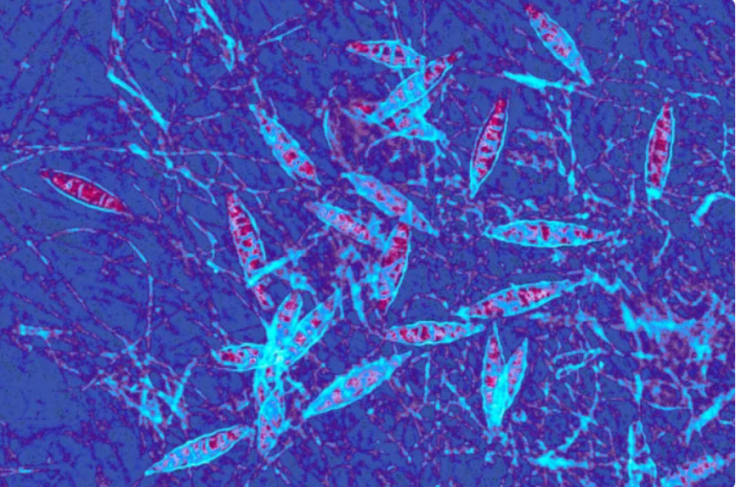Two cases of highly contagious drug-resistant ringworm have been detected in New York City, according to a report from the Centre for Disease Control and Prevention (CDC). One of the two patients (both unrelated women), has no history of international travel recently, which means the infection has come from within the country.

Cases of this highly contagious ringworm were first detected in South Asia then in Europe and now in the USA. Despite the name worm the infection is actually not caused by worm.
Ringworm is defined as "a common, highly contagious, superficial infection of the skin, hair, or nails" caused by the fungus Trichophyton indotineae. It spreads by skin-to-skin contact and "usually looks like a circular pattern of raised, itchy scales," according to the CDC. Infections from this drug-resistant fungus have spread fast in South Asia over the last decade, likely due to abuse of drugs to treat them, such as topical antifungals and corticosteroids.
Symptoms
The first woman patient in the USA who developed an infection in 2021 had "large annular, scaly, pruritic plaques" over her neck, stomach, pubic region, and buttocks. The 47-year-old woman traveled to Bangladesh in the summer of 2022 and developed an infection there. She had developed rashes on her thighs and buttocks. Doctors there treated her with topical antifungal and steroid creams, but the rash did not seem to clear up. Several other family members in Bangladesh also developed similar rashes.
Medication
In both cases, doctors initially gave several anti-fungal cream treatments used for ringworm to the patients, but when there was no improvement for several weeks. Subsequently, both were given oral Terbinafine which was not found effective either.
After this, in the first case of a 28-year-old woman doctors put her on itraconazole, a liquid medicine that's typically used to treat yeast infections in the mouth and throat. It seemed to work, and the infection cleared up after the woman took the medication for four weeks. Doctors are still monitoring her because ringworm infections can return.
The second patient was treated with a four-week course of griseofulvin, a medication also often used to treat athlete's foot and fungal infections on the scalp, but doctors are looking into other treatment options. Her son and husband, who live with her, are undergoing evaluation for similar infections.
Caution
Dr. Priya Soni, a pediatric infectious disease specialist at Cedars-Sinai Medical Center in Los Angeles, says "It's impressive that physicians were able to get the species identified with the help of their public health department." She also indicates " It is a real signal that there's been some epidemiological changes within the fungal species."
"It may also be a little more widespread than we have noted before, so, for physicians and other providers, I think it's important to be aware that we may be seeing more of this particular species as we go into the warmer, moist summer months," said Soni, who was not involved with either new case. "I think with globalization and just the travel that we're going to see over the summer, this may be something that we may see more of as the months go on."
If someone develops rashes that do not respond to terbinafine after about four weeks of treatment could be seen as indicators. The CDC also encourages doctors to educate patients about how to prevent the spread of ringworm.
Soni said she would advise people to not share clothes, combs, or hats with people who have a rash and to avoid close contact with those who have ringworm.
Because fungi like warm, moist environments, dry your feet well between taking a shower and putting on socks and shoes. Good hand hygiene can also help since the fungal infection is spread skin to skin









